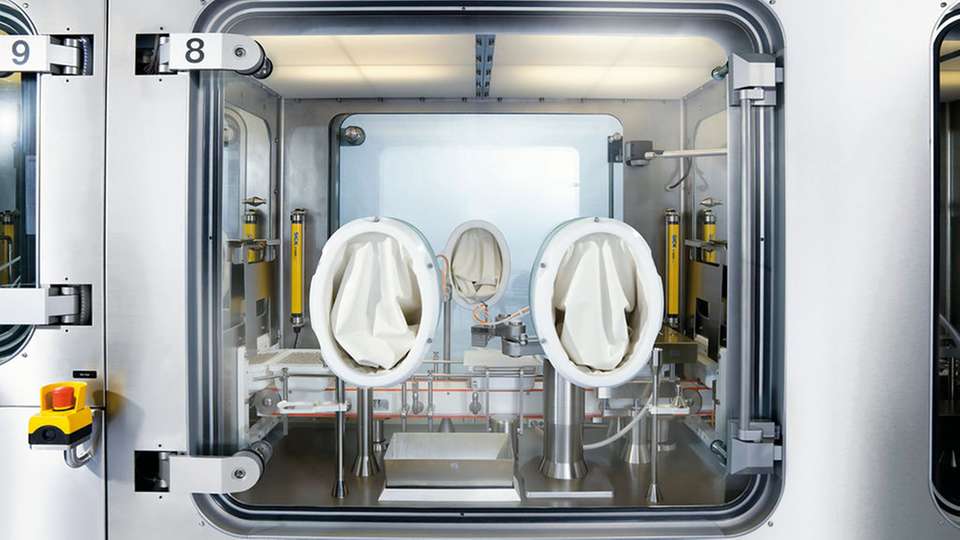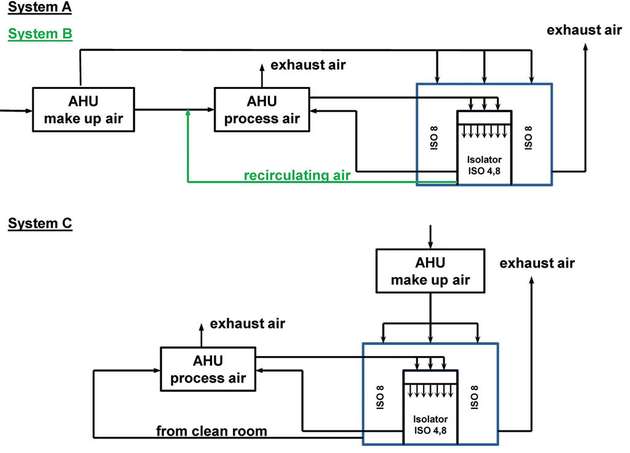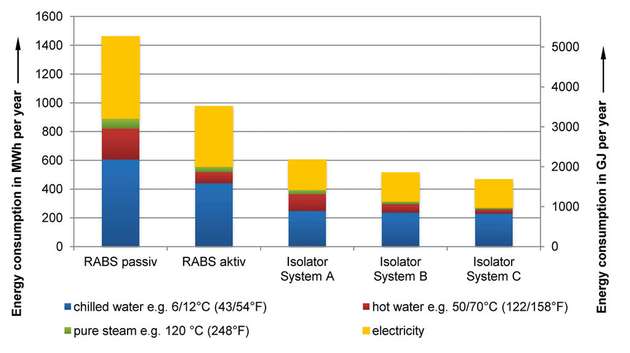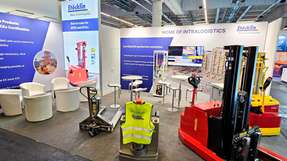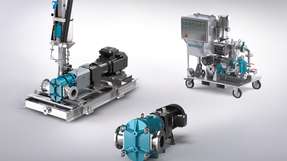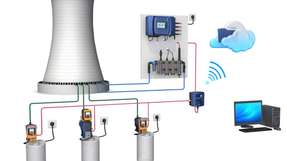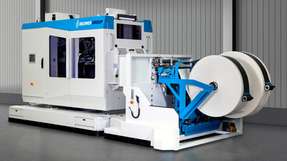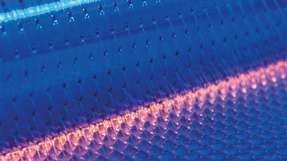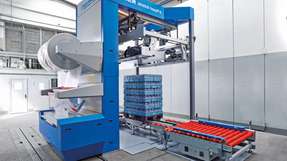Many different and highly complex process steps, combined with long development periods and expensive ingredients, make the pharmaceutical industry a very cost-intensive business. Moreover, pharma has the reputation of being notoriously indifferent towards energy consumption and reluctant to consider a more ecological production alternative due to the regulatory complexity. However, being neither immune against rising energy costs nor against higher regulatory requirements, the pharmaceutical industry is currently rethinking its manufacturing philosophy. In parallel, the production of high-potency pharmaceuticals has grown extensively, causing manufacturers to pay more heed to even safer production processes. Good Manufacturing Practice (GMP) guidelines partly require dedicated facilities to minimize the risk of cross contamination.
Barrier between operator and production
Both RABS and isolators are suited to avoid product contamination. RABS provide a physical barrier between the production area and the operator environment. The production area is equipped with a rigid machine enclosure, safety-locked doors and ports with gloves. Depending on the kind of aeration, RABS can be divided into active and passive systems. Active RABS have self-contained air handling equipment, while passive RABS are sealed to the ceiling of a class B cleanroom.
An isolator in turn is a hermetically sealed system with a complete separation of operator and process area. Doors cannot be opened during production, which makes it possible to operate isolators in a class D clean room environment (ISO 8, in operation). Isolators are equipped with a system for an automated bio-decontamination cycle and an air handling unit (AHU). The latter ensures a sufficient air exchange and temperature control by heating or cooling, as well as permanent overpressure control of the process area to avoid ingress of contaminated air.
Savings of up to 65 percent
The main differences between RABS and isolator systems in regard to energy consumption consist in the smaller cleanroom space and the classification of the surrounding cleanroom. In Europe, isolator systems can be operated in a class D cleanroom, while RABS need a surrounding class B cleanroom (ISO 7, in operation). In RABS, fresh air is normally not recirculated, and they require additional areas for air locks and dressing rooms. Isolator systems can be integrated into the technical building services in various ways. From an energetic point of view, it is desirable for as little outside air as possible to be conditioned for the isolator. A maximum use of recirculation significantly reduces the outside air flow rate. Depending on how the air is supplied and discharged, an isolator with a system that uses air from the surrounding room to condition the process air can save up to 65 percent of energy (figure page 32).
Which factors must be considered to obtain such a comparative result? The main sources for energy consumption in barrier systems are cold and hot water, steam and electricity. Cold water is essential for chilling the outside air and for dehumidification. The opposite, humidification, is achieved by pure steam. Electrical power is, amongst others, required for heating and cooling of outside air and for fans.
Depending on the individual parameters, the energy consumption of active RABS can be approximately one third lower than for passive RABS. While passive RABS are completely supplied by fresh pre-conditioned air, active RABS use pre-conditioned air from the cleanroom. At the same airing conditions in the process room, passive RABS require a higher effort for fresh air treatment. Hence, active RABS save steam and electrical power that would otherwise be required for humidification and outside air handling.
Depending on their air handling configuration, isolator systems also consume differing amounts of energy for chilled water, hot water, pure steam and electricity. System A (figure page 31) provides pre-conditioned make-up air to the process AHU, which precisely adjusts the air parameters to the process requirements. While System A discharges the exhaust air to the outside, System B re-uses it for process conditioning during production. System C takes air from the cleanroom environment, and recycles it, or discharges it during bio-decontamination.
Air conditioning, a major energy consumer
As the aforementioned comparisons show, air conditioning in technical building services is a key factor in the analysis of energy efficiency – especially in the pharmaceutical industry with its cleanrooms. Air handling systems control the numbers of particles and germs by means of filtration. By managing the differential pressure between different cleanrooms and filling lines, it is possible to avoid the transportation of particles, vials or contaminated air into the process environment. One of the most frequently used air conditioning systems is central recirculation/mixed air conditioning, which conforms to the principle setup of barrier systems according to ISPE Good Practice Guide. This system is used especially to supply several barrier systems. The supply air and recirculation air passes through all components of the AHU, namely mixing chamber, filter, heater, cooler and humidifier.
Passive RABS have no aeration equipment; they are supplied with air from the cleanroom ceiling and are conditioned by the building services. Active RABS, on the other hand, have their own aeration and filtration equipment and take the air directly from the cleanroom. The UDAF (Unidirectional Air Flow) fans are independent from the cleanroom aeration and are directly placed onto the RABS processing area. Isolators have a separate outside air conditioning and filtration system with its own recirculation ducts; their UDAF is similar to the one inside RABS. Isolators are generally equipped with a proprietary process AHU, which compensates internal heat loads and corresponds to the special air requirements of bio-decontamination. Subject to the isolator system in use, the process AHU can be supplied by an additional outside AHU, while the exhaust air is discharged to the outside. On the other hand, the process AHU may only discharge the amount of air which is necessary to achieve the specified number of fresh air changes, and to control the pressure level inside the isolator by an exhaust fan.
Meaningful investment decisions
A number of pre-defined parameters must also be taken into account for an energy-related calculation of barrier systems. Amongst these parameters are room size, change of air ventilation, fresh air rate, regulated and unregulated cleanroom temperature, outside air temperature, heat recovery rates, as well as thermal loads. This specific data can have a large impact on the results and may vary significantly, depending for instance on the local climate or seasonal temperatures. A comparison of the energy consumption of different barrier systems is only possible for a very specific situation and should always be recalculated on the basis of the relevant component characteristics.
Each system, location, room size, or air exchange rate can highly affect the results of comparative calculations. Pharmaceutical manufacturers who either want to save energy costs through their choice of equipment, or want to contribute to green pharmaceutical manufacturing – or even both – require a reliable partner with extensive industry knowledge. An individual calculation should be carried out for each new project, clearly determining the parameters and specifying the goals. Only then can such a comparison offer a meaningful approach on how to integrate energy consumption into investment decisions – and ultimately save ongoing operating costs.
Achema hall 3.1 booth C71





